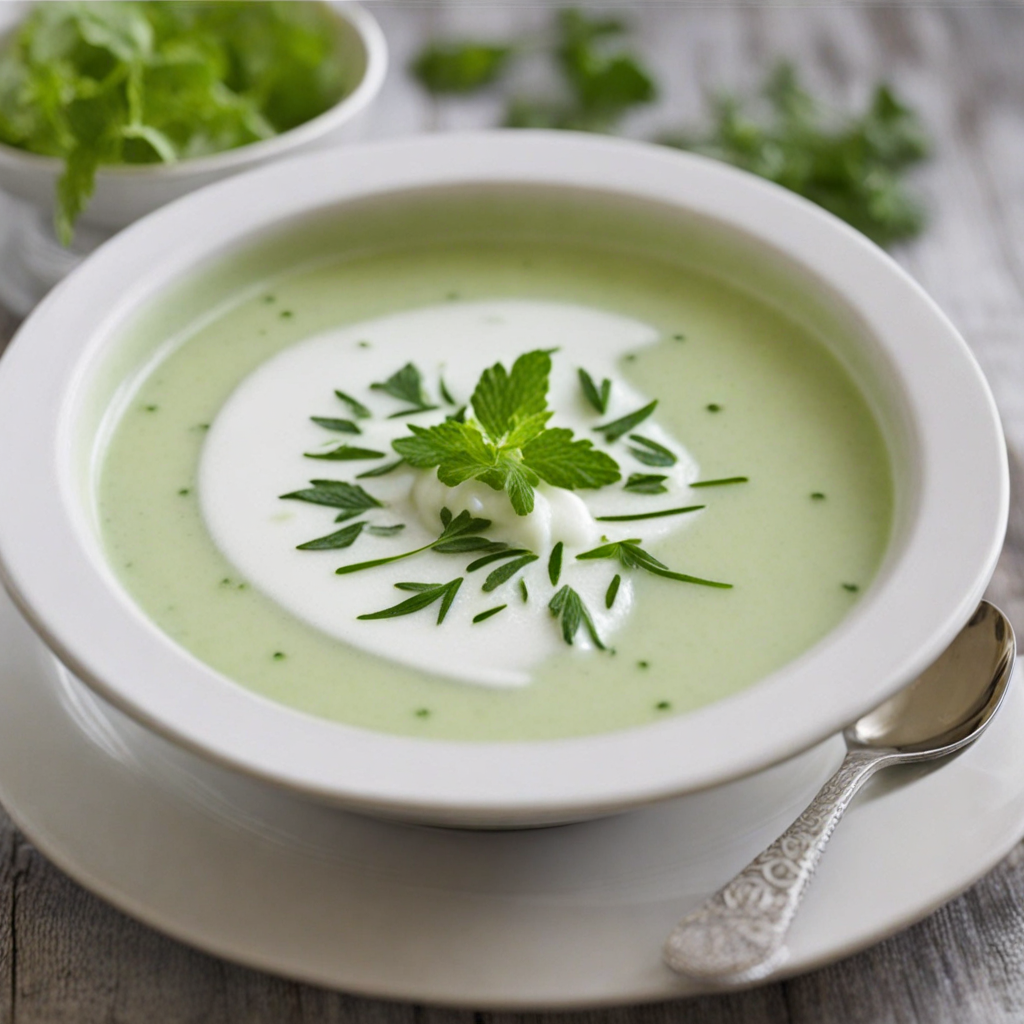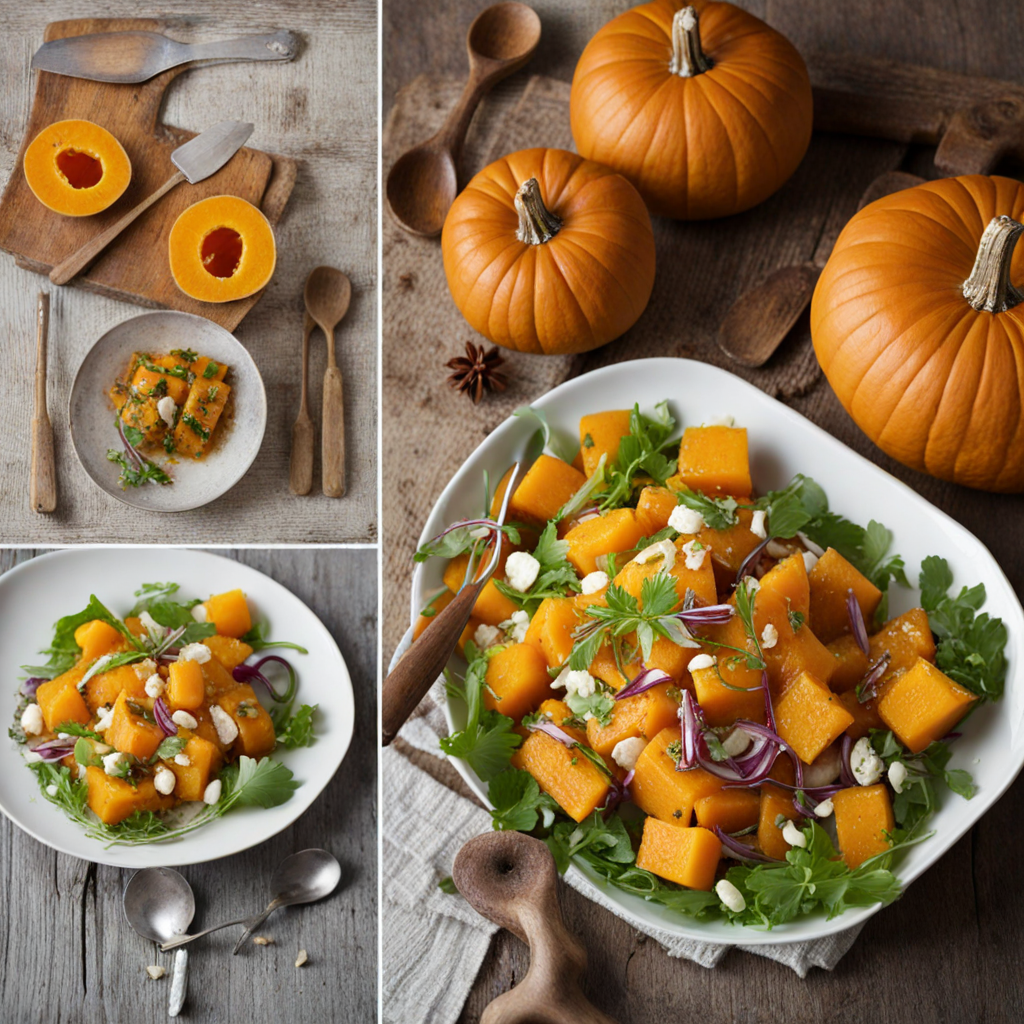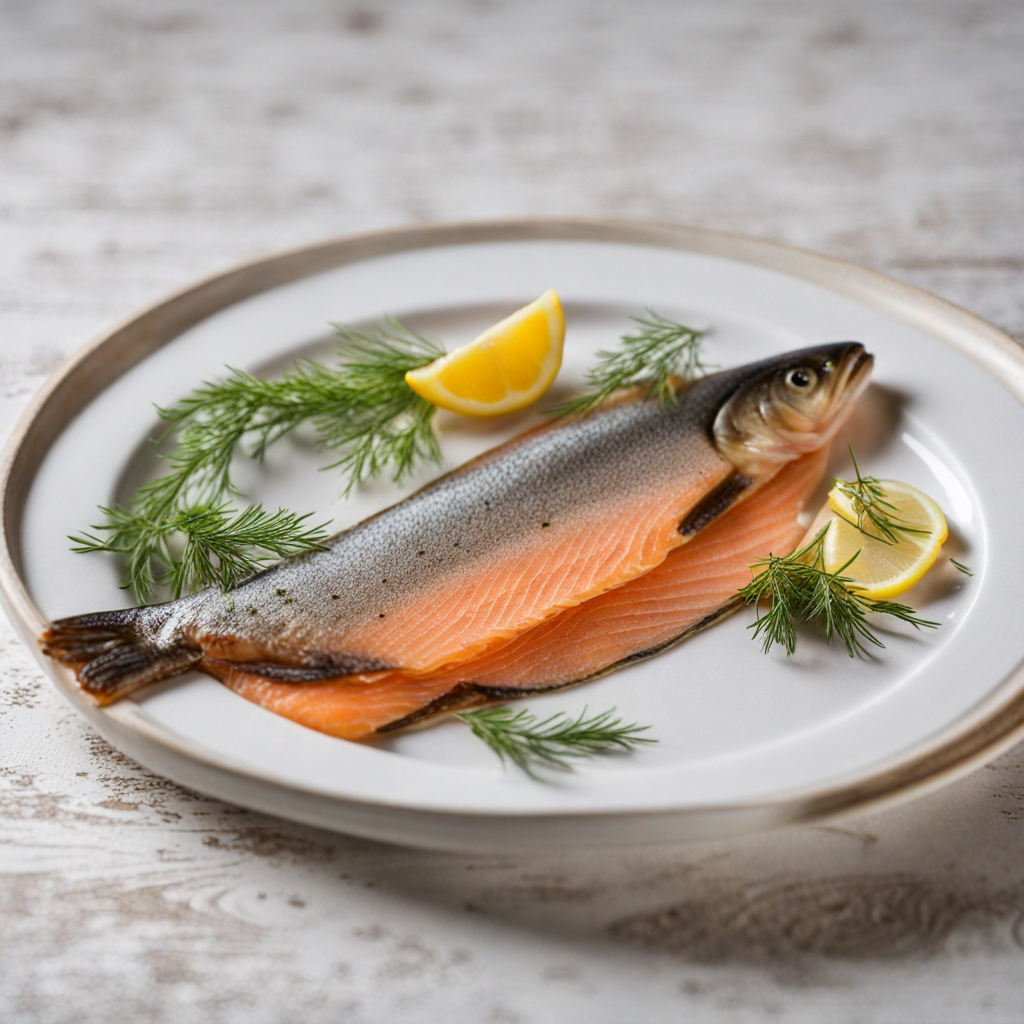Chilled Cucumber Soup
Chilled Cucumber Soup, a refreshing dish from Estonia, embodies the essence of the country's vibrant summer produce. This delightful soup is primarily made from fresh cucumbers, which are abundant during the warmer months. The cucumbers are typically blended until smooth and combined with creamy yogurt or sour cream, creating a velvety texture that is both light and satisfying. The natural sweetness of the cucumbers shines through, complemented by a hint of tanginess from the dairy, making each spoonful a harmonious balance of flavors. To elevate the taste and add complexity, various herbs such as dill or mint are often included, infusing the soup with an aromatic freshness that echoes the lush Estonian landscapes. A touch of garlic can be incorporated for an extra zing, while a sprinkle of salt and pepper enhances the overall flavor profile. Served chilled, this soup is perfect for hot summer days, providing a cooling respite while showcasing the simplicity and elegance of Estonian cuisine. Garnished with additional cucumber slices, fresh herbs, or a drizzle of olive oil, Chilled Cucumber Soup is not only visually appealing but also a versatile dish that can be enjoyed as a starter or a light meal. Its simplicity allows the natural flavors to shine, making it an ideal canvas for experimentation with various toppings or accompaniments. Whether served at a summer gathering or as a solo treat, this soup invites you to savor the fresh, crisp taste of Estonia's seasonal bounty.
How It Became This Dish
The Chilled Delight of Külmsupp: An Estonian Culinary Tradition #### Origins of Külmsupp Külmsupp, which translates to "cold soup" in Estonian, is a dish that reflects the historical and cultural nuances of Estonia, a country located at the crossroads of Northern and Eastern Europe. The origins of Külmsupp can be traced back to the rural traditions of the Estonian people, where the availability of fresh ingredients dictated the diet. The practice of consuming chilled soups is not unique to Estonia; it is found in various European cuisines, particularly in regions with similar climates, such as Scandinavia and the Baltic States. Historically, Külmsupp likely emerged as a practical solution for cooling down during the hot summer months. In agrarian societies, where food preservation was essential, cold soups provided a way to utilize surplus vegetables and dairy products. Ingredients such as beets, cucumbers, radishes, and dill were abundant in the summer, making them perfect candidates for a refreshing dish. The use of fermented dairy products, such as buttermilk or kefir, reflected the broader Eastern European tradition of utilizing dairy for both nutrition and preservation. #### Cultural Significance Külmsupp holds a special place in Estonian culinary culture, particularly during the summer months. It is often served as a light meal or starter, and its vibrant colors and refreshing flavors make it a staple at family gatherings, picnics, and national celebrations. The soup is not merely a dish but a symbol of Estonian identity, marrying agricultural heritage with the communal spirit of sharing meals. One of the most popular variations of Külmsupp is the beetroot version, known as "peedisupp." This dish is characterized by its striking magenta hue and is often garnished with chopped hard-boiled eggs, fresh herbs, and sometimes a dollop of sour cream. The vibrant color of the soup is not only visually appealing but also represents the richness of Estonian soil and the importance of beets as a staple crop in the region. #### Development Over Time As Estonia evolved through the ages, so too did Külmsupp. The country has a tumultuous history, having been influenced by various cultures, including German, Swedish, and Russian. Each of these cultures left its mark on Estonian cuisine, and Külmsupp is no exception. The incorporation of dairy products, for example, can be traced back to the influence of Russian culinary traditions, while the use of fresh herbs aligns with the German penchant for gardening. In the late 19th and early 20th centuries, Estonia began to embrace a national identity, which included a renewed interest in traditional foods. This period saw the popularization of Külmsupp not just as a rural dish but as part of the urban culinary landscape. Cookbooks began to document traditional recipes, and Külmsupp became a beloved dish in urban households as well. The post-World War II era further solidified its place in Estonian cuisine, as the country sought to preserve its cultural identity amidst the Soviet influence. During the Soviet era, Külmsupp underwent a transformation. Ingredients became more standardized, and the dish was often made with whatever was available, which sometimes led to a loss of the artisanal quality that defined earlier versions. However, the spirit of Külmsupp prevailed, and it remained a popular dish at home and in restaurants, embodying the resilience of Estonian culinary traditions. In the 21st century, as Estonia has embraced globalization and modern culinary trends, Külmsupp has experienced a renaissance. Chefs have begun to experiment with the traditional recipe, introducing new flavors, textures, and presentation styles. While the classic beetroot version remains a favorite, contemporary interpretations may include a medley of seasonal vegetables, flavored broths, and innovative garnishes. The rise of farm-to-table dining has also led to a resurgence in the use of organic, locally sourced ingredients, encouraging a deeper connection between Estonians and their food. Notably, Külmsupp has also found its way into international culinary circles, as Estonia has gained recognition for its unique food culture. Events like Tallinn’s Restaurant Week showcase traditional dishes, allowing locals and tourists alike to experience the flavors of the nation. In this context, Külmsupp is celebrated not only as a refreshing dish but as a culinary ambassador that tells the story of Estonia’s agricultural heritage and cultural identity. #### Modern Variations and Serving Suggestions Today, Külmsupp is enjoyed in various forms, with each household often having its own treasured recipe. While the classic beets and buttermilk combination remains popular, other ingredients such as cucumbers, radishes, and even smoked fish have made their way into the mix. The soup can be served chunky or blended into a smooth consistency, catering to personal preferences. Typically, Külmsupp is served chilled, making it perfect for hot summer days. It can be complemented with rye bread, a staple in Estonian cuisine, or a side of smoked fish, which reflects the country’s coastal heritage. Additionally, a sprinkle of fresh herbs like dill or chives adds a fragrant note that elevates the dish. As Estonia continues to grow as a culinary destination, Külmsupp is poised to remain a beloved dish that captures the essence of Estonian culture. Its simplicity, versatility, and refreshing nature make it a perfect dish for both locals and visitors to enjoy. Whether served at a festive gathering or as a quick summer meal, Külmsupp embodies the spirit of Estonia—a celebration of fresh ingredients, communal dining, and a deep-rooted connection to the land. In conclusion, Külmsupp is more than just a cold soup; it is a dish steeped in history, cultural significance, and adaptability. As Estonia continues to evolve, so too will Külmsupp, remaining a cherished culinary tradition that links the past with the present, and a testament to the resilience and creativity of the Estonian people.
You may like
Discover local flavors from Estonia







